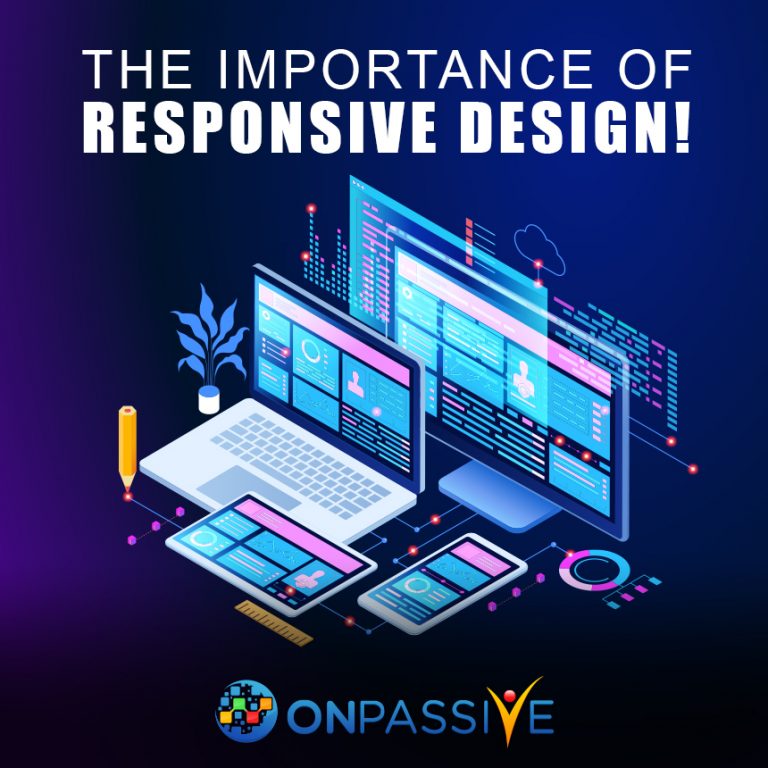
Hi there!
In this article, we will be looking at the importance of responsive website design in creating web pages for your website. ONPASSIVE tools are a set of excellent tools in helping you to create fast-loading pages especially AMP pages.
First, let us look into the definition of a responsive website. A responsive website can simply be defined as a website which changes the layout while offering a unique experience dependent on the device being used. It is ideal for viewing on mobile.
A responsive mobile website contains the following elements which are unique to this form of design:
- A lack of horizontal scrolling
- Greater visibility of readable text
- Sufficient space for tap targets
- No need for zooming for reading text
The number of smartphone users has surpassed 2 billion users and is growing rapidly every single day. If websites are not designed for mobile, this may cause a decline in search engine rankings.
Responsive web design (RWD) creates an overall system for a single site, which reacts to the device of the user. They are fluid and have a flexible layout which adjusts according to the screen size.
Websites which are designed in a responsive manner offer a unique optimized browsing experience, which looks and work well. Let us look into the numerous benefits of responsive website design.
What are the benefits of mobile responsive design?
- This form of design drastically improves and enhances the overall experience for the user on your website.
- It is the most consistent form of design on your website.
- Website responsiveness is a great way of refining the content on your website and ensures that only the most essential information is displayed.
- Responsive web design helps to increase the visibility on search engines due to its mobile-friendly nature.
- Mobile-friendly websites will show up much higher than non-optimized websites.
Why is Responsive design important for your business?
Responsive design has numerous benefits for your business. Some of the many benefits of responsive design are:
- Increases the overall reach to customers and clients, especially on smaller devices such as smartphones and tablets.
- Guarantees a consistent experience which increases lead generation, sales and conversions.
- Analytics, tracking and reporting can all be done in a single place.
- Reduction in load time and the cost of on-site management.
- This type of design helps to stay ahead of the competition.
What is the future of responsive design for mobile?
Google requires a set of following optimized elements for creating an effective mobile-friendly user experience. Some of the different points are:
- A readable size for text, without the need for zooming in.
- Content which fits into the screen of the device, without the need for horizontal scrolling.
- Adequate spacing for links and buttons, so that tapping on it is much more simplistic.
- Easy load times for pages to load up quickly.
- Not using Flash which is embedded in your website.
What are the best practices for responsive design?
A responsive website needs to look and work well, so having a responsive web design can be helpful in achieving this.
The three main components which help the responsive design stand apart from other forms of web design are fluid grid, flexible text and images and media queries.
Some of the various ways responsive web design is important for your business are:
- Helps to increase the overall reach to consumers across all devices.
- Maintains a consistent user experience which helps to increase retention.
- Consolidates analytics, tracking and reporting.
- Decreases the time and the overall cost of on-site content management.
- Helps to compete in the industry with other brands.
In conclusion, this is the importance of responsive design! In the next article, we will be looking into the SEO benefits for responsive web design.



Annegrete Krings
4 years ago
ait belaid hassan
4 years ago